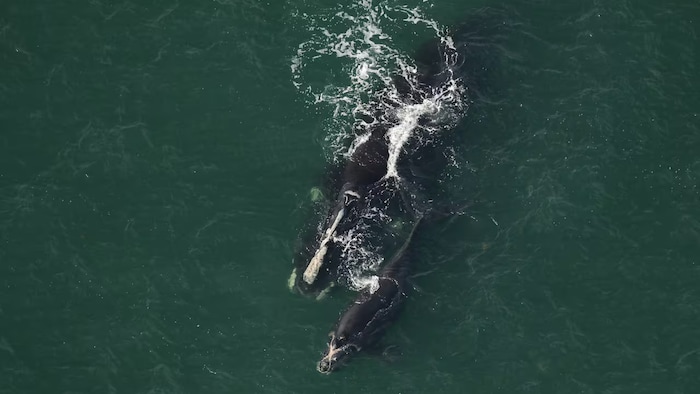Open in full screen mode Swerve was seen on January 3, 2024 with her calf. Radio- Canada Speech synthesis, based on artificial intelligence, makes it possible to generate spoken text from written text. Nine calves have been born since North Atlantic right whale breeding season began a month ago. Swerve, a female who had her fifth calf eight years ago, is the last to give birth this year. According to Amy Warren, a research assistant at the New England Aquarium's Anderson Cabot Center for Ocean Life, the number of births during this period of the breeding season is similar to that of the previous season. Last year at this time, I think we had 10 whales, so we are not very far from that.
This right whale gave birth for the first time this year.
In the past, the average annual births were around 22 calves, but these numbers have not been seen for about ten years.
Enough females are gathered in the species' breeding range, a territory that extends along the coast of Georgia to northern Florida, to do so. However, it is unlikely that this will happen again until the health of right whale populations improves, laments Amy Warren.
L& #x27;one of the problems is that every year right whales are injured due to human activity.
Loading
Murder of a 29-year-old woman in Granby
ELSE ON NEWS: Murder of a 29-year-old woman in Granby
According to data from the New England Aquarium, 31 whales were injured by human activities in 2023, including one twice.
Most of these incidents were caused by entanglements in fishing gear.
According to a study published in 2021, these entanglements have significant consequences on whales. These incidents lead, for example, to stunted growth, which can also harm the reproductive capacity of females.
Unfortunately, we see today females wait before having their first calves. Potentially, they don't grow as quickly or are not able to prepare their bodies for reproduction as quickly as before, says Amy Warren.
This particularly seems to be the case of one of the females who gave birth for the first time this year.
It's a somewhat mysterious whale, says Amy Warren. We knew little about her when she was first observed in 2007 as an adult. We've seen her now for the last 17 years, but this is the first time she's given birth.
While right whales once could have their first calf around age 8 or 9, females now have their first calves late in their teens or early 20s.
In October, the North Atlantic Right Whale Consortium estimated that the population of this endangered mammal was declining. stood at 356.
With information from Hannah Rudderham ofCBC

